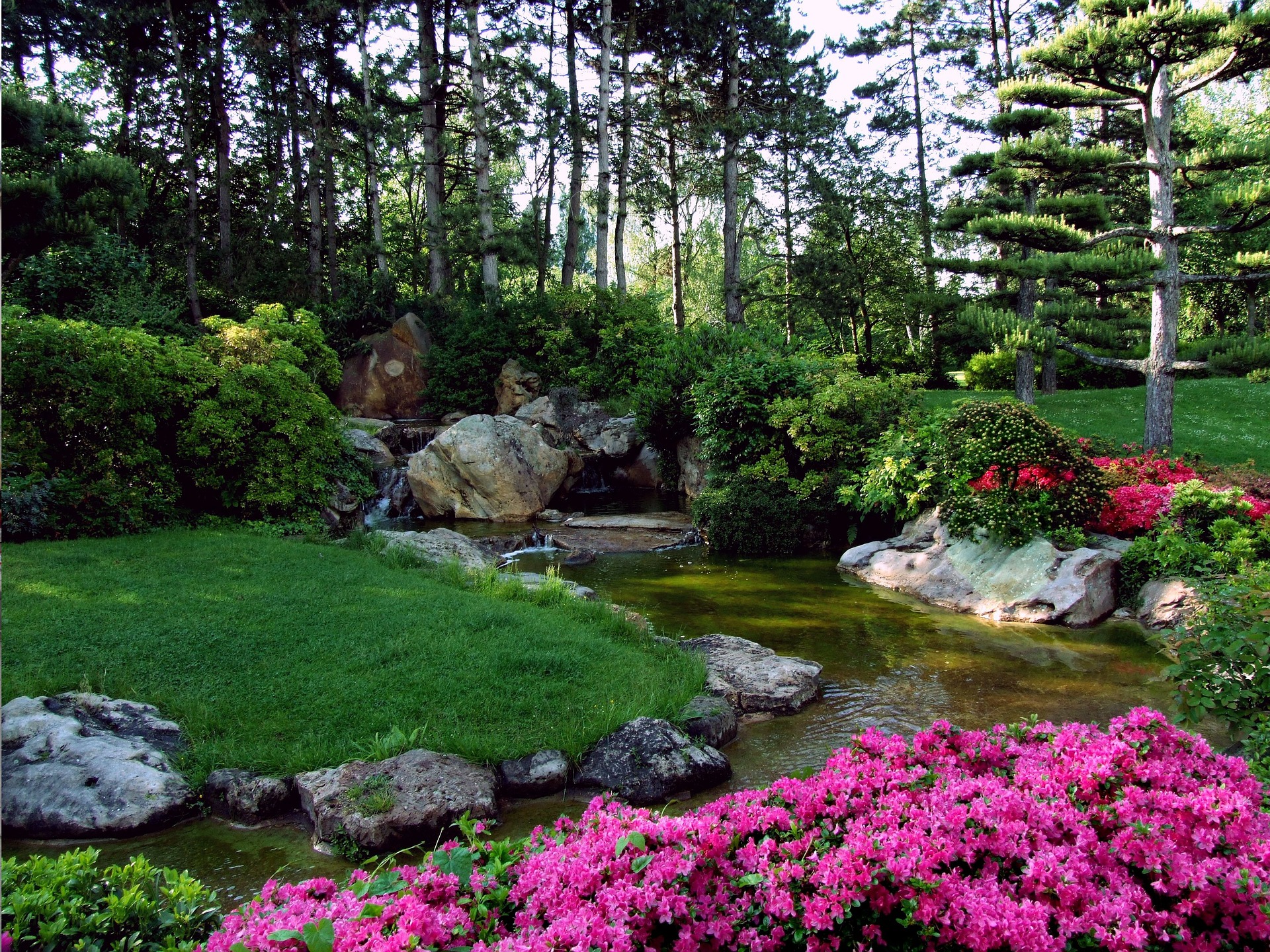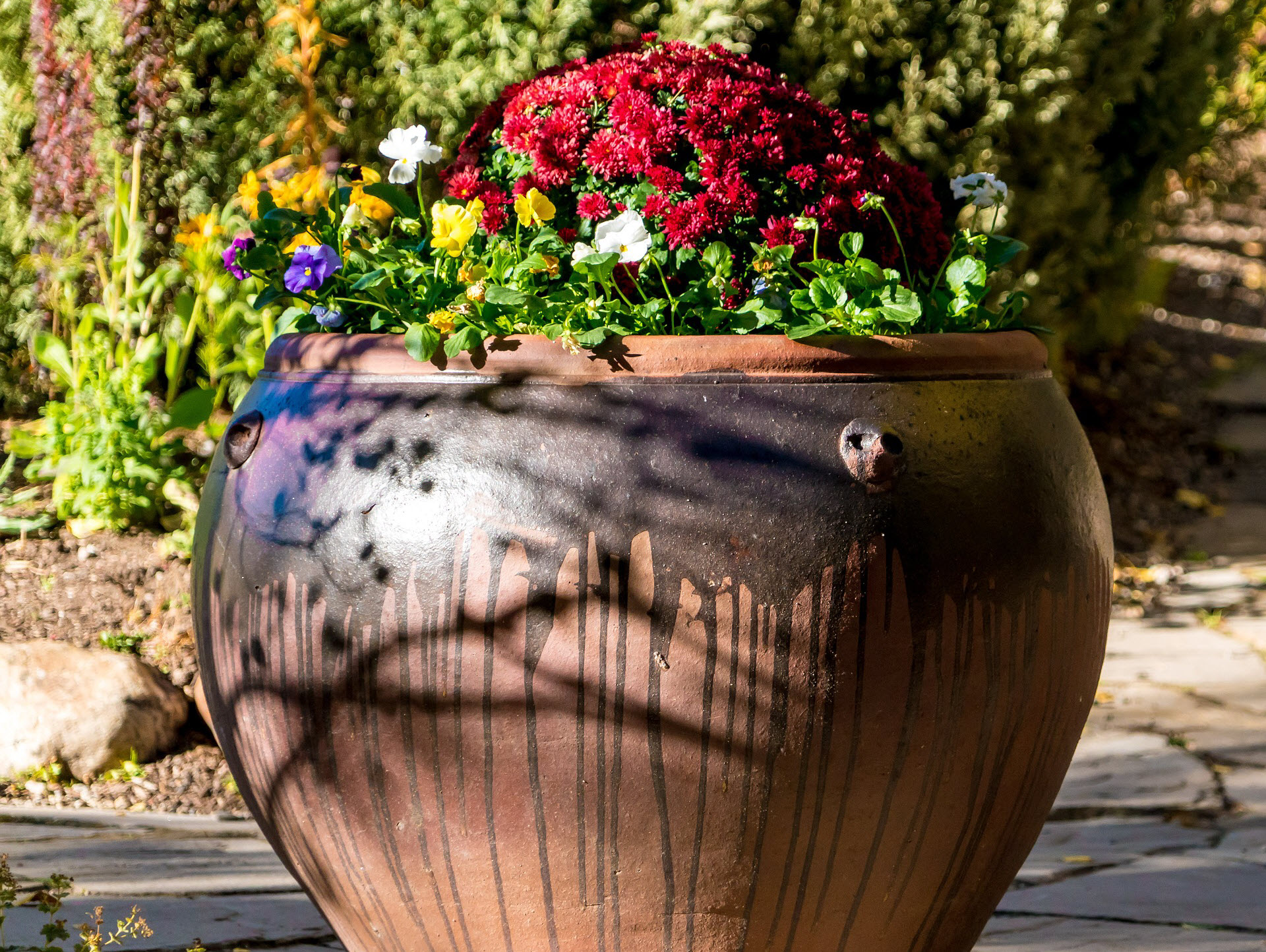

Designing and Creating Japanese Gardens
- By Penny Underwood
- Crowood Press/Trafalgar Square Publishing
- $45 (Hardback)
- 192 pages
A rock representing a turtle or a tree pruned to suggest clouds... every element in a Japanese garden has symbolic meaning. Drawing on the myths and religious legends of the ancient Chinese, who long ago migrated to the mountainous islands known as Japan, these gardens build on an awareness of man’s affinity with nature and reflect a tradition of landscapes based on interpreting the natural world through garden design.
Teien is the Japanese word for garden; it can also be interpreted to mean the contrasting opposites of wildness and control. The basics of Japanese garden design combine this concept with several others, including the interdependence of plants, rocks and water, and Fusui. Fusui encompasses a set of rules to guide the placement of elements in the garden to enhance energy flow. For example, there are “the three friends of winter”: conifers to represent long life, flowers and colorful foliage as signs of rebirth, and bamboo, as a symbol of strength because it bends without breaking.
This book, with its many beautiful photos, is as much a total immersion into the history and philosophy of Japanese gardens as a three-week tour. The book is organized in short sections. You will find a survey of styles as they have evolved through time. These styles range from eighth century ritual sites to strolling gardens for meditation and sixteenth century tea gardens. The survey of styles ends with a discussion of modern landscapes that use elements in the garden to symbolize larger geographic features. For example, a stand of trees could symbolize a mountain range in the garden.
There also are chapters on design elements, such as plants, water, and hardscape, including teahouses and viewing platforms. The philosophical significance and Japanese terminology for each of the elements are explained, and they are accompanied by detailed how-to descriptions and line drawings. The author, who is a British landscape designer, provides a practical chapter on how to plan and maintain a Japanese garden in the West. The section on maintenance includes explicit instructions for the many distinctive types of pruning used in Japan.
This book is rich in specific information with a special treat at the end: an extensive armchair tour of Japanese gardens with an emphasis on those found in the ancient city of Kyoto.
— Review by Marge Howard-Jones —

Tips for Container Gardening: 300 Great Ideas for Growing Flowers, Vegetables & Herbs
- By the Editors and Contributors of Fine Gardening
- Taunton Press
- $19.95 (Paperback)
- 208 pages
The book “Tips for Container Gardening” includes photographs, suggestions and solutions for container gardening. Every garden should have examples of these delightful mini gardens. This book is a valuable resource for designs, color, foliage, seasonal designs and edibles. Plus it is filled with answers to a great many questions about growing plants in containers.
The chapters include “Design,” “Pots & Planters,” and “Planting & Maintenance.” “Pots & Planters” includes how to pick a pot, unusual containers, window boxes, hanging baskets and care. “Planting &Maintenance” discusses topics like soil, potting, watering, pruning and pests and other problems.
As you might imagine, the tips found within this book are concise and clearly described and they are accompanied by lovely illustrative photographs. This book could become one of the most used books in your garden library. Keep a lookout for your own copy, or better yet, go to the web at www.taunton.com and order one. You will be glad you did.
— Review by Christie Wright —

On Flowers
- By Sara Slavin
- Chronicle Books, San Francisco
- $16.95 (Paperback)
- 159 pages, 157 color illust.
Originally published in 1988, and now available in softcover, this fascinating book would be the perfect present for any flower lover. True, it does not dispense advice on gardening per se, but it is full of intriguing information and is a feast of flower lore. The design of the book and the many innovative photographs, in stunning color, combine to give a mystic and philosophical flavor to the text, which in its turn is embellished with very apposite quotations. There is a short discussion on flower arranging (“dip flower stems in gin for long life”) and some recipes using flowers; these last are beautiful to look at but not likely to satisfy hearty appetites. Various anecdotes appear throughout the text, and it is interesting to read the story of the 'Peace' rose, a description of the Hanging Gardens of Babylon, and William Hogarth's exposition on his famous curve. The text features quotes from a group of classic garden writers and it also contains biographical notes of such great names as Gertrude Jekyll and Luther Burbank. There can be no substitute for a gift of fresh flowers, but this book would provide an enduring alternative.
— Review by Elsie M. Topham —